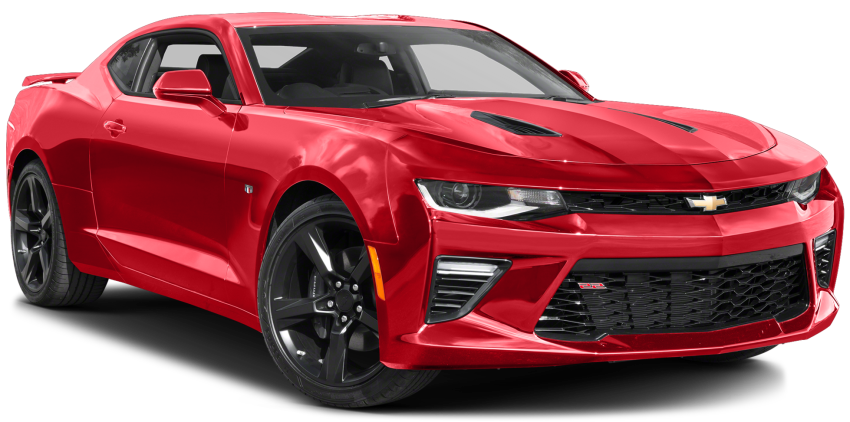Alfa Romeo Automobiles S.p.A. - History
Introduction to Alfa Romeo
Alfa Romeo is not just a car brand; it’s an embodiment of passion, performance, and Italian flair. From its early beginnings to becoming a symbol of automotive excellence, this iconic manufacturer has carved out a unique niche in the hearts of car enthusiasts around the world. With every model that rolls off the production line, Alfa Romeo marries craftsmanship with cutting-edge technology. The story of Alfa Romeo is one filled with innovation, triumphs on racetracks, and design that captures attention at first glance. As we delve into its rich history and remarkable journey through time, you'll discover how Alfa Romeo has continuously pushed boundaries while staying true to its roots. Buckle up as we explore the legacy behind these stunning machines!
The Early Years: 1910-1945
Alfa Romeo's journey began in 1910, rooted in Milan, Italy. The company emerged from the merger of A.
L.
F.
A. (Anonima Lombarda Fabbrica Automobili) and Italian automaker Darracq. This collaboration set the stage for a brand known for its passion and performance.
The early models were marked by innovative engineering and distinctive design. Their first car, the 24 HP, showcased advanced specifications that attracted attention on the roads.
As World War I disrupted production, Alfa Romeo shifted focus to military vehicles. Post-war demand surged as civilian life resumed. The 1920s brought success with the introduction of iconic models like the P2 Gran Prix racer.
By the late 1930s, Alfa Romeo was synonymous with racing excellence and luxury cars alike. High-performance engines became their hallmark during this era, solidifying their reputation on both tracks and city streets across Europe.
The Golden Age: 1946-1970
The years between 1946 and 1970 marked a remarkable period for Alfa Romeo. The company emerged from the shadows of World War II, ready to reinvent itself. With renewed vigor, they launched several iconic models that captured the hearts of enthusiasts.
In this golden age, the Alfa Romeo Giulia took center stage. Its design combined elegance with performance, setting new standards in the automotive world. The sporty engine specifications gave drivers an exhilarating experience on every road.
Racing also flourished during these years. Alfa Romeo dominated motorsports with their innovative technology and daring engineering feats. Achievements on racetracks solidified their reputation as a leader in performance cars.
Alfa's commitment to pushing boundaries led to groundbreaking innovations like fuel injection systems and lightweight materials. This era not only defined the company's identity but also influenced car manufacturing worldwide.
Revival and Future Plans: 2022 onwards
Alfa Romeo is on a thrilling journey of revival and innovation. The brand has been revitalizing its lineup with electrification at the forefront. New models are being developed to meet sustainability goals while retaining that iconic Italian flair.
The introduction of hybrid engines signals a shift toward greener performance without losing driving passion. Enthusiasts can expect cutting-edge technology paired with Alfa's rich heritage.
Moreover, plans for expanding their SUV range are underway. This move aims to capture the growing market demand while offering distinctive style and sporty handling that only Alfa Romeo delivers.
As they look ahead, collaboration with industry leaders promises advanced features in safety and connectivity. These enhancements will ensure an engaging experience behind the wheel while staying true to Alfa’s racing roots.
With each model, there’s a commitment to craftsmanship and performance excellence, reaffirming Alfa Romeo's place in automotive history as they navigate through modern challenges.
Iconic Models and Innovations
Alfa Romeo has long been synonymous with innovation and style in the automotive world. The brand's iconic models often blend performance with aesthetic appeal.
Take the Alfa Romeo Giulia, for instance. Launched in the 1960s, it set new standards for sports sedans. Its sleek lines and powerful engines made it a favorite among enthusiasts.
Then there's the legendary Alfa Romeo Spider. This convertible captured hearts from its debut, featuring a design that exuded romance and freedom on every drive.
The company also pioneered technology with innovations like turbocharging and lightweight materials. These advancements improved both fuel efficiency and handling without sacrificing performance.
Every model tells a story steeped in passion, racing heritage, and Italian flair. Each vehicle not only serves as transportation but as a piece of art molded by engineering excellence.
Legacy and Impact on the Automotive Industry
Alfa Romeo has carved a unique niche in the automotive landscape, blending performance with style. Its vehicles are celebrated not only for their sleek designs but also for cutting-edge engineering.
The brand's commitment to innovation is evident in its pioneering technologies. From lightweight materials to turbocharged engines, Alfa Romeo continuously pushes boundaries. Their motorsport heritage has laid the groundwork for advancements that trickle into consumer models.
Moreover, Alfa Romeo’s iconic status influences car manufacturers globally. Many aspire to capture the same blend of sportiness and elegance that defines this legendary automaker.
Through collaboration and competition, they have sparked trends within the industry—setting standards rather than following them. The legacy of Alfa Romeo remains vibrant as it inspires new generations of designers and engineers striving for excellence in automotive craftsmanship.
Conclusion
Alfa Romeo has carved a unique niche in the automotive world, blending elegance with performance. Its rich history is not just about cars; it’s about passion and innovation.
The brand's commitment to engineering excellence resonates through its iconic models. Enthusiasts often reminisce about the thrilling experience behind the wheel of an Alfa Romeo. Each model tells a story of craftsmanship and Italian flair.
Looking ahead, Alfa Romeo continues to embrace modern technology while honoring its heritage. Electric vehicles are on the horizon, promising new dimensions for fans old and new.
As they evolve, one thing remains clear: Alfa Romeo will always be synonymous with exceptional driving experiences that captivate hearts and minds alike. The journey is far from over; it's merely shifting gears into an exciting future filled with promise and potential.
Introduction to Alfa Romeo
Alfa Romeo stands as a symbol of Italian craftsmanship and automotive passion. Founded in 1910, this storied brand has captivated car enthusiasts worldwide with its blend of performance and elegance.
From the outset, Alfa Romeo distinguished itself through innovative engineering and striking designs. Each model tells a story—one of speed, style, and a rich racing heritage that traces back to early successes on the track.
The iconic quadrifoglio emblem reflects not just luck but also excellence in motorsport. Throughout the decades, Alfa Romeo has consistently pushed boundaries while staying true to its roots.
As we explore its history further, we’ll uncover how each era shaped the company into an enduring legend in the automotive industry. From their engines to unique specs, every detail reveals why Alfa Romeo continues to inspire awe among fans today.
The Early Years: 1910-1920
Alfa Romeo began its journey in 1910 as A.
L.
F.
A. (Anonima Lombarda Fabbrica Automobili). Founded in Milan, the company focused on producing quality vehicles that quickly captured attention.
Their first model, the 24 HP, debuted just a year later. It showcased innovative engineering for its time. The car was equipped with a powerful engine and stylish design elements.
In 1915, Alfa Romeos were adapted for military use during World War I. This adaptation helped solidify their reputation for durability and performance under pressure.
After the war ended, the brand re-emerged stronger than ever. In 1918, they adopted the name “Alfa Romeo” after acquiring new leadership from Nicola Romeo. This marked a significant turning point in their identity and ambitions within the automotive landscape.
The stage was set for growth as they refined their designs and pursued high-performance models that would shape their future trajectory.
Expansion and Success: 1921-1945
During the 1920s, Alfa Romeo began to solidify its reputation for performance and design. The introduction of the P2 model in 1924 marked a significant milestone. This car not only dominated racing circuits but also showcased cutting-edge engineering.
The company continued to thrive through the turbulent years leading up to World War II. It gained recognition for its luxurious vehicles that combined style with powerful engines. Models like the 6C series became symbols of elegance and innovation.
However, challenges loomed on the horizon as war broke out in 1939. Production shifted towards military needs, altering Alfa Romeo's trajectory drastically. Despite this setback, their commitment to quality never wavered.
Post-war recovery saw a resurgence in production and creativity. Iconic models emerged during this period, setting new standards for automotive excellence and paving the way for future generations of drivers who craved both speed and luxury.
Post-War Struggles: 1946-1960
After World War II, Alfa Romeo faced significant challenges. The company struggled to rebuild its facilities and workforce. It required time to restore production capabilities.
The early years were marked by limited resources and economic instability in Italy. Despite these hurdles, Alfa Romeo's spirit remained unbroken. They launched the 1900 model in 1950, which was innovative for its time.
This sedan introduced new engineering techniques that set standards for future car models. However, competition grew fiercer as other manufacturers entered the market with mass-produced vehicles.
Although delays plagued projects like the Giulietta series initially planned for 1954, perseverance led them through tough times. By adapting their strategies and embracing modern design principles, they gradually regained momentum while staying true to their racing heritage. Racing successes during this period would later define their identity and reputation within the automotive industry.

































